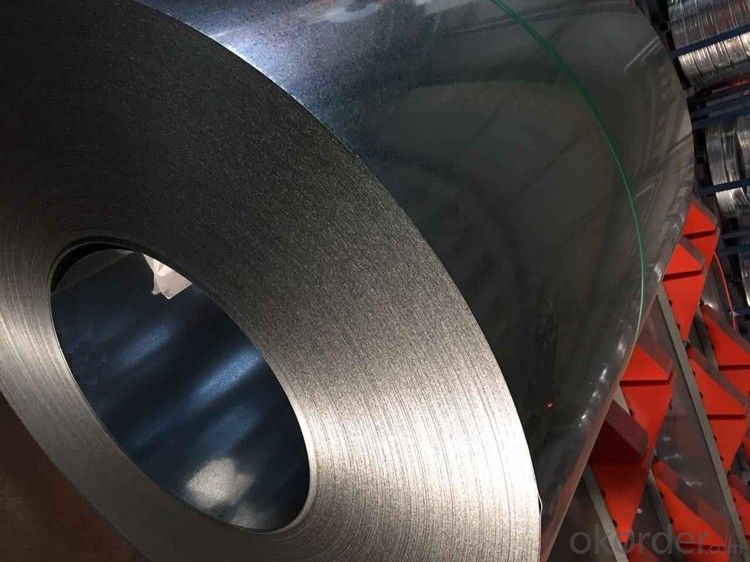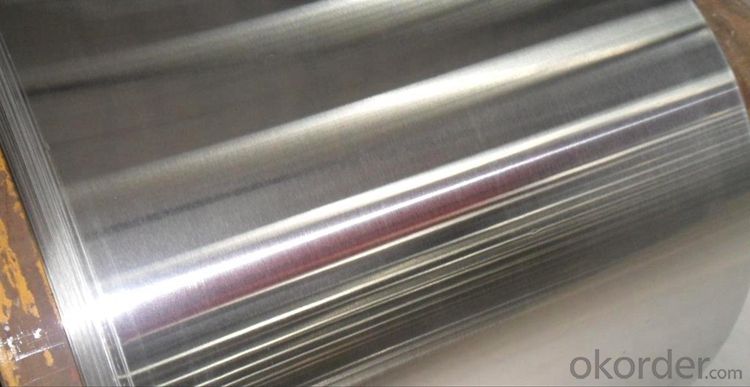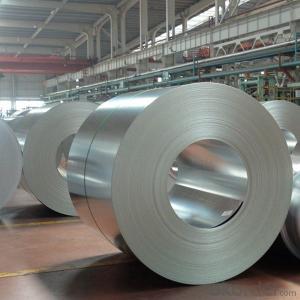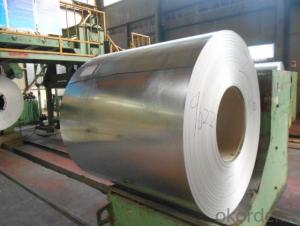Steel Sheet Cold Rolled Stainless Steel Made in China
- Loading Port:
- Shekou
- Payment Terms:
- TT OR LC
- Min Order Qty:
- 20 m.t.
- Supply Capability:
- 200000000 m.t./month
OKorder Service Pledge
OKorder Financial Service
You Might Also Like
Item specifice
Description for Stainless Steel Coils/Sheets:
Material | 201/202/301/304/304L/310S/316/316L/321/410/420 |
Technique | old Rolled, Cold Drawn, Hot Rolled |
Standard | ASTM,AISI,JIS,GB,DIN,EN |
Thickness | 0.3mm-100mm or as your requirement |
Width | 100mm-3000mm or as your requirement |
Length | 1000mm-10000mm or as your requirement |
Surface Treatment | BA,2B,No.1,No.4,No.8,HL,8K,Brush |
Packing | 1.Export sea worthy package + water proof paper + wooden pallet 2. Max Loading 26.5mt for each 20Gp container 3.Safe loading and fixing Professiona teams 4. Professional shipping line |
Delivery | 25 days after received the 30% deposit of T/T or L/C |
Payment | T/T,30%payment in advance,70%T/T after the copy of B/L or L/c at sight |
Application | Stainless Steel Sheets are widely used in below fields: 1: Construction field, shipping building industry 2: Petroleum and Chemical Industries 3: Food and Mechanical Industries |
Specifications for Stainless Steel Coils/Sheets:
Grade | C ≤ | Si ≤ | Mn ≤ | P ≤ | S ≤ | Ni ≤ | Cr ≤ |
201 | 0.12 | 0.75 | 7.00 | 0.045 | 0.045 | 1.00-1.28 | 13.70-15.70 |
202 | 0.15 | 1.00 | 2.25 | 0.045 | 0.045 | 4.07-4.17 | 14.00-16.00 |
304 | 0.08 | 0.75 | 2.00 | 0.045 | 0.03 | 8.00-11.00 | 18.00-20.00 |
304L | 0.035 | 0.75 | 2.00 | 0.045 | 0.03 | 8.00-13.00 | 18.00-20.00 |
309 | 0.15 | 0.75 | 2.00 | 0.045 | 0.03 | 12.00-15.00 | 22.00-24.00 |
310S | 0.08 | 1.50 | 2.00 | 0.045 | 0.03 | 19.00-22.00 | 24.00-26.00 |
316 | 0.08 | 1.00 | 2.00 | 0.045 | 0.03 | 10.00-14.00 | 16.00-18.00 |
316L | 0.035 | 0.75 | 2.00 | 0.045 | 0.03 | 10.00-15.00 | 16.00-18.00 |
321 | 0.04-0.10 | 0.75 | 2.00 | 0.045 | 0.03 | 9.00-13.00 | 17.00-20.00 |
405 | 0.08 | 0.75 | 1.00 | 0.045 | 0.03 | 0.06 | 11.5-13.5 |
409 | 0.089 | 1.00 | 1.00 | 0.045 | 0.05 | 0.06 | 10.50-11.75 |
410 | 0.15 | 0.75 | 1.00 | 0.045 | 0.03 | 0.06 | 11.5-13.5 |
420 | 0.16-0.25 | 1.00 | 1.00 | 0.040 | 0.03 | 0.06 | 12.00-14.00 |
430 | 0.12 | 0.75 | 1.00 | 0.045 | 0.03 | 0.06 | 16.00-18.00 |
Features of Stainless Steel Coils
(1)Good ductility
(2)Good corrosion resistance
(3)Excellent abrasion resistance and fatigue strength
(4)Good weldability
(5)Oxidation resistant performance
(6)Excellent in high temperature
Detail picture for Stainless Steel Coils/Sheets


Packaging & Delivery for Stainless Steel Coils/Sheets:
Packaging Detail Standard export packing or following customer's demand
Delivery Time: Within 30-40 days after deposit or according to the order quantity
FAQ for Stainless Steel Coils/Sheets:
Q: How can I get the samples?
A: If you need some samples to test ,please pay for the transportation freight of samples and our samples are free for you.
Q: How can I get your price list?
A: Please send us your email or fax and order information – Quantity, Specification (steel type, thickness, width, surface finish), then I can send you the price list.
- Q:What are the different types of surface finishes available for stainless steel sheets?
- There are several types of surface finishes available for stainless steel sheets, each with its own unique characteristics and applications. 1. No. 1 Finish: This is the most common and widely used finish for stainless steel sheets. It is hot rolled and annealed, resulting in a rough, dull appearance with visible grain lines. No. 1 finish is suitable for applications where a rough surface texture is desired, such as industrial or structural uses. 2. No. 2B Finish: This finish is achieved by cold rolling the stainless steel sheet after a No. 1 finish, followed by annealing and descaling. It has a smooth, reflective surface with a slight matte appearance. No. 2B finish is commonly used for applications requiring a clean, aesthetic look, such as kitchen appliances, architectural accents, and decorative items. 3. No. 3 Finish: Also known as a brushed finish, this type of surface finish is achieved by mechanically polishing the stainless steel sheet with abrasive materials. It creates a unidirectional pattern of fine lines, giving the metal a satin-like appearance. No. 3 finish is often used for decorative purposes, such as furniture, signage, and elevator doors. 4. No. 4 Finish: Similar to No. 3 finish, No. 4 finish is achieved by mechanically polishing the stainless steel sheet, but with finer abrasives. It produces a smoother, more refined surface with a low gloss. No. 4 finish is commonly used for applications requiring good corrosion resistance and easy maintenance, such as kitchen equipment, automotive trim, and architectural components. 5. No. 8 Mirror Finish: This is the most reflective and luxurious surface finish for stainless steel sheets. It involves polishing the metal with progressively finer abrasives until a highly reflective mirror-like surface is achieved. No. 8 mirror finish is often used for decorative and high-end applications, such as architectural accents, jewelry, and luxury consumer goods. 6. Embossed Finish: This finish involves stamping or pressing a pattern onto the stainless steel sheet, creating a textured surface. Embossed finishes can vary from simple designs to intricate patterns, offering both aesthetic appeal and improved slip resistance. They are commonly used for applications requiring both functionality and visual interest, such as flooring, countertops, and wall cladding. Overall, the choice of surface finish for stainless steel sheets depends on the desired appearance, functionality, and performance requirements of the specific application.
- Q:What is the difference between stainless steel sheets and regular steel sheets?
- The main difference between stainless steel sheets and regular steel sheets is that stainless steel is an alloy that contains a minimum of 10.5% chromium, which gives it its unique corrosion-resistant properties. Regular steel, on the other hand, does not contain enough chromium to be considered stainless and is more prone to rust and corrosion. Stainless steel sheets are also typically more expensive than regular steel sheets due to their enhanced durability and resistance to corrosion.
- Q:What are the different types of stainless steel sheet textures available?
- There are several different types of stainless steel sheet textures available, each offering a unique aesthetic and functional appeal. Some of the commonly used textures include: 1. Brushed: This texture is achieved by brushing the stainless steel surface with abrasive materials in a unidirectional pattern. It creates a smooth, satin-like finish that is commonly seen in kitchen appliances and decorative applications. 2. Mirror: As the name suggests, this texture creates a highly reflective and mirror-like surface. It is achieved by polishing the stainless steel sheet using progressively finer abrasive materials until a reflective finish is obtained. Mirror-textured stainless steel sheets are often used in architectural and decorative applications. 3. Embossed: This texture involves imprinting patterns or designs onto the stainless steel sheet using embossing rollers. The raised patterns add depth and visual interest to the surface, making it a popular choice for interior design applications such as wall cladding or elevator panels. 4. Perforated: This texture involves creating a pattern of holes or perforations on the stainless steel sheet. It allows for the passage of light, air, or liquids while adding a decorative element to the surface. Perforated stainless steel sheets are commonly used in architectural, interior design, and filtration applications. 5. Etched: This texture is achieved by chemically etching the stainless steel surface using acid or other corrosive substances. The etching process creates a pattern or design on the surface, resulting in a visually appealing, textured finish. Etched stainless steel sheets are often used in decorative applications such as signage, elevator doors, or wall panels. 6. Hammered: This texture involves using hammers or other tools to create a hammered or dimpled pattern on the stainless steel sheet. It adds a rustic, textured look to the surface and is commonly used in architectural and decorative applications. These are just a few examples of the different types of stainless steel sheet textures available. Depending on the desired aesthetic and functional requirements, there are various other textures and finishes that can be applied to stainless steel sheets to achieve different looks and effects.
- Q:What are the different types of stainless steel sheet surface patterns available?
- Some common types of stainless steel sheet surface patterns include brushed, mirror, embossed, diamond, and satin.
- Q:What is the weight of stainless steel sheets?
- The weight of stainless steel sheets may differ based on their thickness and dimensions. Typically, stainless steel sheets possess a density of 8 grams per cubic centimeter. To determine the weight of a stainless steel sheet, one must acquire the dimensions (length, width, and thickness) and multiply them to ascertain the volume. Subsequently, the weight can be determined by multiplying the volume by the density.
- Q:How do you prevent warping of stainless steel sheets?
- There are several measures that can be taken to prevent warping of stainless steel sheets. These include: 1. Storage and handling: Stainless steel sheets should be stored in a clean and dry environment, away from moisture or excessive heat. It is important to handle the sheets carefully, avoiding any unnecessary bending or pressure that could cause warping. 2. Welding techniques: When welding stainless steel sheets, it is crucial to use the correct techniques and procedures. Proper heat control and weld placement can help minimize the risk of warping. Preheating the sheets before welding can also prevent distortion. 3. Stress relieving: This involves heating the stainless steel sheets to a specific temperature and then cooling them slowly. Stress relieving helps eliminate residual stresses that could lead to warping. 4. Support during machining: Proper support is important when machining stainless steel sheets to prevent warping. Clamps or fixtures can be used to securely hold the sheets in place. 5. Minimize heat exposure: It is important to avoid prolonged exposure to high temperatures during processes like cutting, grinding, or forming. Using coolants or lubricants during these processes can dissipate heat and minimize the risk of warping. 6. Choose the right grade and thickness: Selecting the appropriate grade and thickness of stainless steel sheets for a specific application is essential. Thicker sheets generally have more resistance to warping, while certain grades may be more prone to distortion. Consulting with a materials expert or engineer can help in selecting the right stainless steel sheets for a project. By implementing these preventive measures, the risk of warping stainless steel sheets can be significantly reduced, ensuring their integrity and longevity.
- Q:Are stainless steel sheets magnetic?
- Yes, stainless steel sheets can be magnetic. The magnetic properties of stainless steel sheets depend on their composition. Generally, stainless steel is a non-magnetic material. However, certain grades of stainless steel, such as the 400 series (e.g., 410, 416, 420, and 430), contain a higher amount of ferritic or martensitic structures, which can exhibit magnetic properties. On the other hand, the commonly used 300 series stainless steel (e.g., 304 and 316) is non-magnetic due to its austenitic structure. Therefore, it is important to consider the specific grade of stainless steel when determining its magnetic behavior.
- Q:What is the strength of stainless steel sheets?
- Several factors contribute to the strength of stainless steel sheets. Firstly, stainless steel is an alloy of iron and chromium, which grants it excellent resistance to corrosion. This corrosion resistance renders stainless steel sheets ideal for various applications, even in environments where they may be exposed to moisture, chemicals, or extreme temperatures. In addition to corrosion resistance, stainless steel sheets possess high tensile strength. Tensile strength refers to the maximum amount of tensile stress a material can endure before failure. Stainless steel sheets have a high tensile strength, enabling them to withstand heavy loads and resist deformation or breaking under pressure. Moreover, stainless steel sheets exhibit exceptional durability and hardness. This means they can endure wear and tear, making them suitable for applications that require long-lasting and robust materials. Stainless steel sheets also have a high resistance to heat, allowing them to maintain their structural integrity even at elevated temperatures. Another advantage of stainless steel sheets is their versatility. They can be shaped and sized in various ways, making them suitable for a wide range of applications. Additionally, stainless steel sheets can be easily formed, welded, and machined, allowing for customization to meet specific requirements. Overall, the strength of stainless steel sheets lies in their corrosion resistance, high tensile strength, durability, hardness, heat resistance, and versatility. These properties establish stainless steel sheets as a reliable and trusted material in numerous industries, including construction, automotive, aerospace, food processing, and many others.
- Q:What's the difference between stainless steel 304 2B board and Ba board?
- 304 stainless steel2B board: without glossBA board: an ordinary mirror that shines a littleStainless steel and mirror, that is, 8K board, like a mirror
- Q:Are stainless steel sheets resistant to humidity?
- Yes, stainless steel sheets are resistant to humidity. Stainless steel is known for its excellent corrosion resistance properties, which includes resistance to moisture and humidity. This makes stainless steel sheets a suitable material for various applications in humid environments such as kitchens, bathrooms, and outdoor structures. The chromium content in stainless steel creates a protective layer of chromium oxide on the surface, which acts as a barrier against moisture, preventing it from penetrating the material and causing corrosion. Additionally, stainless steel sheets are often used in industries like food processing and pharmaceuticals where cleanliness and hygiene are crucial, and their resistance to humidity ensures their durability and longevity in such environments. Overall, stainless steel sheets are a reliable and durable option for humid conditions due to their inherent resistance to moisture and corrosion.
1. Manufacturer Overview |
|
|---|---|
| Location | |
| Year Established | |
| Annual Output Value | |
| Main Markets | |
| Company Certifications | |
2. Manufacturer Certificates |
|
|---|---|
| a) Certification Name | |
| Range | |
| Reference | |
| Validity Period | |
3. Manufacturer Capability |
|
|---|---|
| a)Trade Capacity | |
| Nearest Port | |
| Export Percentage | |
| No.of Employees in Trade Department | |
| Language Spoken: | |
| b)Factory Information | |
| Factory Size: | |
| No. of Production Lines | |
| Contract Manufacturing | |
| Product Price Range | |
Send your message to us
Steel Sheet Cold Rolled Stainless Steel Made in China
- Loading Port:
- Shekou
- Payment Terms:
- TT OR LC
- Min Order Qty:
- 20 m.t.
- Supply Capability:
- 200000000 m.t./month
OKorder Service Pledge
OKorder Financial Service
Similar products
New products
Hot products
Hot Searches
Related keywords
































